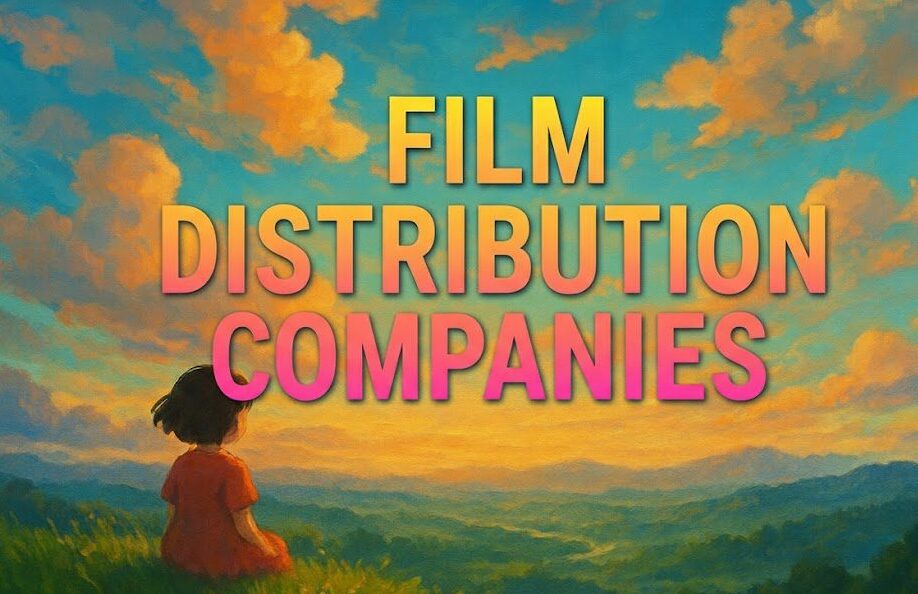Introduction
Let’s talk about a market that’s exploding. While everyone’s focused on the usual suspects, the African entertainment landscape is undergoing a massive transformation.
We’re talking about a continent with over 1.3 billion people, a rapidly growing middle class, and an insatiable appetite for new content. But here’s the catch: many distributors and sales agents are intimidated by it.
They think it’s too complex, too fragmented. They’re leaving money on the table. A lot of it. If you’re wondering how to get into film licensing in Africa, you’re in the right place.
It’s not as hard as you think. You just need a roadmap.
In this post, I’m going to walk you through the exact strategies you need to license your film and TV content across Africa, find the right buyers, and avoid the common pitfalls. We’ll turn that confusion into a clear, actionable plan.
Key Takeaways
| Market Opportunity | Africa’s VOD market is projected to have over 15 million subscribers by 2026. Don’t ignore this growth. |
| Key Players | Focus on a mix of continental giants (MultiChoice, Canal+), local champions (e.g., in Nigeria, South Africa), and international streamers. |
| Content is King | Local and diaspora content is in high demand, but there are also strong niches for international genres like action, drama, and kids’ content. |
| Deal Strategy | Don’t just aim for one big pan-African deal. A region-by-region or country-by-country strategy often yields higher returns. |
| The Right Tools | Using a data platform is no longer a luxury; it’s essential for finding active buyers and understanding their needs. |
Is your content a good fit for the African market?

Step 1: Understand the Market (It’s Not a Monolith)
First things first. Stop thinking of “Africa” as one single market. It’s 54 countries with incredibly diverse cultures, languages, economies, and media landscapes. A strategy that works in Nigeria might completely fail in South Africa or Kenya.
I’ve seen too many distributors make this mistake. They send out a generic catalog and wonder why they get no response. You have to be smarter than that.
Break It Down by Region and Language
To make it manageable, start by grouping countries into logical clusters:
- Anglophone West Africa: Led by Nigeria (Nollywood is a powerhouse) and Ghana. This region has a massive, highly engaged audience.
- Francophone Africa: Includes countries like Senegal, Côte d’Ivoire, and Cameroon. This market is dominated by French players like Canal+.
- Southern Africa: South Africa is the most mature market, with high Pay-TV and SVOD penetration. It often sets the trend for neighboring countries like Zimbabwe and Zambia.
- East Africa: Key markets include Kenya and Tanzania. Mobile-first content consumption is huge here.
Your approach to film licensing in Africa must be tailored to the linguistic and cultural nuances of these regions. A French-dubbed film is essential for Francophone territories, while English-language content works well in Nigeria and South Africa.
Step 2: Find the Right Buyers (Who’s Actually Buying?)
Okay, so you’ve mapped out the continent. Now, where do you find the people who will actually pay for your content? The buyer landscape is a mix of traditional broadcasters and new digital players.
The Three Main Types of Buyers
You need to know who you’re targeting. Here are the key players:
- Pan-African Broadcasters: These are the giants. Think MultiChoice (DStv, GOtv, Showmax) and StarTimes. They buy rights for multiple territories, offering broad reach.
- Local and Regional TV Stations: Don’t underestimate the power of free-to-air channels in major countries. They have huge audiences and a constant need for content to fill their schedules.
- VOD Platforms: This is where the most exciting growth is. You have international players like Netflix and Amazon Prime Video acquiring content specifically for their African libraries. Then you have local VOD champions who are competing fiercely for market share.
The challenge? Knowing which of these dozens of companies is the right fit for your film or TV show. Who is actively acquiring content right now? Who is paying for the genres you represent?
Trying to track this manually with spreadsheets is a nightmare. It’s slow, inefficient, and you’ll always be a step behind the competition. This is where having a centralized, dynamic database becomes critical.
Step 3: Tailor Your Content and Pitch
Once you’ve identified potential buyers, you can’t just blast them with your entire catalog. That’s a fast track to the spam folder. You need to do your homework and personalize your pitch.
Know What They Want
Every buyer has a specific content mandate. A family-friendly TV channel in Kenya has very different needs from a gritty SVOD service in South Africa.
- Analyze their existing library: What genres do they favor? Do they acquire older library titles or only new releases?
- Understand their audience: Are they targeting a mass market or a specific niche?
- Look at their recent acquisitions: What kind of deals have they announced in the last six months? This shows you their current strategy.
Your pitch should reflect this research. Instead of saying, “Here is our catalog of 200 films,” try this:
“I saw that you recently acquired three romantic comedies for your Valentine’s Day lineup. We have a new, award-winning rom-com with a strong female lead that would be a perfect fit for your audience. Can I send you a screener?”
See the difference? It’s specific, informed, and shows you’ve done your homework. It proves you’re a partner, not just a seller.
Ready to close deals faster in high-growth markets?

Step 4: Navigate the Deal and Windowing Strategy
You’ve got a buyer interested. Great! Now comes the negotiation. The key to maximizing your revenue is a smart windowing strategy.
Windowing is how you license your rights across different platforms over time. Instead of selling all your rights to one player for a flat fee, you can carve them up to increase their total value.
A Sample Windowing Strategy for Africa
Here’s a simplified example of how you could license a film:
| Window | Platform Type | Description |
|---|---|---|
| First Window (Exclusive) | Pan-African SVOD or Pay-TV | License exclusive “Pay 1” rights to a major player like Showmax or Canal+ for a 12-18 month term. This is often your most lucrative deal. |
| Second Window (Non-Exclusive) | Local Broadcasters | After the first window closes, license non-exclusive rights to free-to-air TV stations in key countries (e.g., Nigeria, Kenya). |
| Third Window (Non-Exclusive) | AVOD / Niche SVOD | Finally, place the content on advertising-supported VOD (AVOD) platforms or smaller, niche streaming services to capture the long tail of revenue. |
This approach requires more management, but it can dramatically increase the lifetime value of your content. Don’t give away all your rights in a single deal unless the price is truly exceptional.
How Vitrina Powers Your Africa Strategy
Navigating all of this—finding buyers, tracking their needs, and identifying the right licensing windows—can feel overwhelming.
That’s why we built Vitrina. Our platform isn’t just a directory; it’s a dynamic intelligence tool for global content licensing.
With Vitrina, you can instantly access verified data on thousands of buyers across Africa, see their content preferences, and understand what they’re acquiring in real-time. It eliminates the guesswork and connects you directly with active acquisition executives, helping you close deals faster in this high-growth market.
Conclusion
Film licensing in Africa is one of the most exciting opportunities in the global entertainment industry today. The market is growing, the audience is hungry, and the digital infrastructure is rapidly improving.
Yes, there are complexities. But by treating Africa as a continent of diverse regions, identifying the right buyers, tailoring your pitch, and using a smart windowing strategy, you can successfully tap into this growth.
Stop seeing it as an intimidating, fragmented market. Start seeing it as your next big revenue stream.
What’s the first strategy you’re going to try? Let me know in the comments.
Don’t let your competitors get there first. The African market is ready for your content, but finding the right partners is key. Sign up for Vitrina today to get direct access to a global marketplace of buyers and sellers, and start closing deals in the world’s fastest-growing entertainment economies. Get your Vitrina membership now.
Frequently Asked Questions
The top challenges are the market’s fragmentation (54 countries), navigating different regulatory environments, and the difficulty in identifying and connecting with the right, active buyers across different regions. A centralized platform helps solve this information gap.
Locally-produced content, especially from Nollywood, is king. However, there’s also a strong demand for international content, including action films, dramas, telenovelas, and children’s programming. The key is matching the right genre to the right buyer.
It varies widely. Deals can be flat-fee acquisitions for specific territories and terms, or revenue-sharing agreements, especially with VOD platforms. Major pan-African deals will command higher flat fees, while deals with smaller, local players might be more flexible.
For distributors new to the continent, partnering with a reputable local agent can be very beneficial. They have established relationships and understand the nuances of their specific territories. However, it’s crucial to vet them properly. You can use a platform like Vitrina to identify and verify potential partners.





































